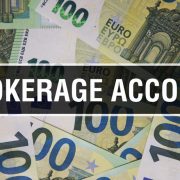The Complete Guide to Understanding a Self-Directed Solo 401(k)
Many of us are used to the concept of a 401(k). It’s a retirement plan. You often use it through work, and sometimes your employer matches it. Easy-peasy. But when you attach these other words to it—“Self-Directed,” “Solo”—does it drastically change the game? You’d be surprised at how simple it can be to direct your retirement and call the shots in your retirement portfolio with just a few tweaks. To that end, let’s explore everything you need to know about the Self-Directed Solo 401(k).
The Self-Directed Solo 401(k): A Definition
A 401(k) plan refers to a specific IRS-approved retirement plan. With a Solo 401(k), the plan is designed for a self-employed person—usually a sole proprietor, or someone who uses a corporation or a limited liability company (LLC) for self-employment. The advantage of using a Self-Directed Solo 401(k) for the self-employed is that they can make contributions both as an employer and as an employee of their company, which can greatly increase the amount they contribute to retirement each year. Think of it as an effective, simple way to expand your capacity for saving.
The Advantages of the Self-Directed Solo 401(k)
Let’s get specific about what those advantages are:
- High contributions. Just how high? In 2019, annual contributions were limited at $56,000 per year, with an additional $6,000 in available catch-up contributions for anyone over the age of 50. Those moved up in 2020, with annual contributions of $57,000 as the maximum with an additional $6,500 in available catch-up contributions for anyone of the age of 50.
- The Self-Directed Solo 401(k) can be borrowed from, up to $50,000 or up to 50% of the account value. These loans must be paid back within five years.
- Checkbook control potential. Using a Self-Directed Solo 401(k) makes it possible to use checkbook control, provided you’ve established the proper infrastructure. In this case, American IRA—should you work with us—would serve as the record keeper while you exercise full control over the checkbook.
- Broad investment options. Why self-direct? Because you’ll find it easy to invest in a broad range of potential retirement assets. This is particularly good for anyone who wants to use high contribution limits to fund larger assets, such as real estate.
Using a Self-Directed Solo 401(k) means that you won’t have to rely on an employer to administer your 401(k). Instead, you’ll be at the helm—and your 401(k) can stay by your side as you build your self-employment income.
Why Pick the Self-Directed Solo 401(k) Over Another Account?
It depends on what your goals and situation might be. For example, many self-employed entrepreneurs will use a SEP-IRA for their retirement planning. But the SEP-IRA does have some limits in terms of what you have to do if your company starts adding employees. A Self-Directed Solo 401(k) is a highly independent way of funding your retirement, using before-tax contributions (i.e., deductible contributions) to help you capitalize on the income you’re earning now.
For someone who wants more wiggle room in their budget, this kind of 401(k) would be a great way to save money, especially if you’re already making retirement investments through a Roth IRA or even a common taxable brokerage account.
Self-directing also opens up all sorts of possibilities for your retirement assets. As long as you stick to the rules, you can invest in all sorts of retirement assets, including precious metals, tax liens, real estate, and more. This helps you diversify your portfolio and build a retirement nest egg that’s sturdy and capable of aggressive growth.
Interested in learning more about Self-Directed IRAs? Contact American IRA, LLC at 866-7500-IRA (472) for a free consultation. Download our free guides or visit us online at www.AmericanIRA.com.










